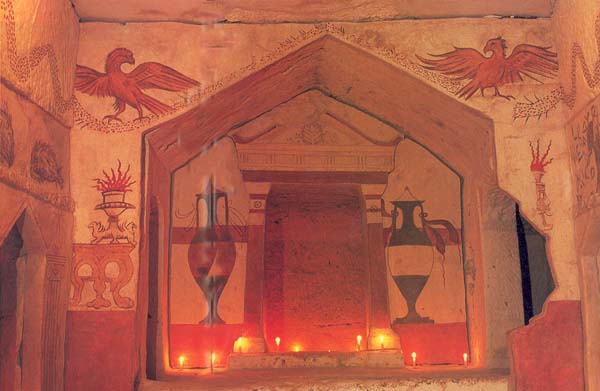Image Details

Richard Nowitz
Painted columns and funerary urns flank the entrance to a burial chamber in a third-century B.C.E. cave-tomb just outside the kibbutz of Beit Guvrin (Jibrin), 35 miles southwest of Jerusalem. The discovery of the tomb in 1902 led archaeologists to the remains of a subterranean city—made of hundreds of caves carved into the soft limestone hills of the Shephelah, the region between the coastal plain and the mountains of central Canaan. An inscription found inside the tomb identifies the site as Biblical Maresha, a chief city in the Shephelah district of Judah (Joshua 15:44).
Although the tomb paintings faded and suffered vandalism after their discovery, archaeologists have been able to study and—with the help of early-20th-century prints of the paintings—restore the cave to its original magnificence.
